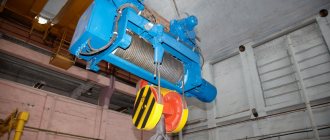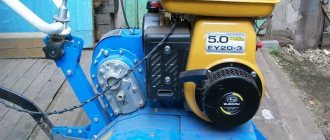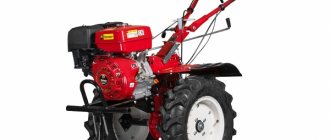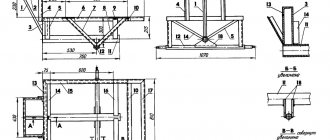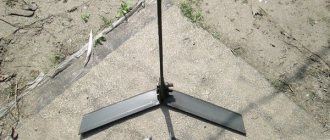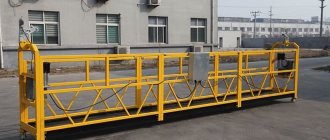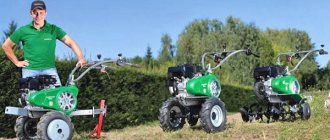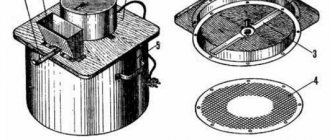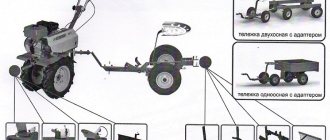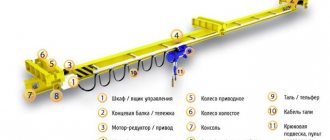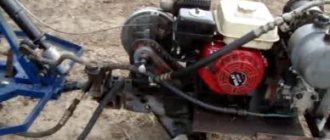Choosing a design
So, you decided to rely on your skillful hands and make a homemade garage lift, rather than purchasing it at a specialty equipment store. This is an understandable desire: the cost of such equipment may not be much less than the cost of your car, and it will rarely be used (only if you are not going to open a service station in the garage).
The idea has arisen, the desire too, now it’s time to choose the design of the device being created . To do this, you should pay attention to factory-made lifts presented on the special equipment market, “peek” at their design and imagine whether you can do something similar.
Most likely, the first thing you will see is a two-post lift , which can be found in almost every auto repair shop. This type of device can be equipped with an electromechanical or electrohydraulic drive.
In the first case, inside each rack there is a threaded shaft rotated by an electric motor with a gearbox. There is a bearing nut on the threaded shaft, which moves along it and accordingly raises and lowers the “legs” on which the car rests.
In a two-post electro-hydraulic lift, the shaft is replaced by a hydraulic drive, the pressure in which is created by an electric motor.
There are
other options of a similar design , but with one, three or four racks.
Another type of lift is a scissor , where a platform with a system of levers (called “scissors”) is raised and lowered using hydraulic actuators driven by electric motors.
When creating such designs, you may encounter many questions and problems that need to be solved. First of all, this is work safety - no one wants to get seriously injured or disfigured due to a broken lift on one unlucky day.
Therefore, you should choose the materials and design of the device so that it can withstand the weight of the car, and with a significant margin .
It is also worth taking care of the manufacture of locking mechanisms that allow you to hold the car in place in emergency situations with the lift.
And the main problem faced by those who want to make a two-post or scissor car lift with their own hands is the complexity of manufacturing and the high cost of parts. It is almost impossible to create a long threaded shaft at home; selecting cylinders and hydraulic hoses is a complex matter, and they are not cheap.
But there is a simpler version of the car lift, adapted for production in garage conditions, that turns the car on its side at an angle of 45°-60° and is called a tipper . Let's take a closer look at it and see what and how it can be made from.
Please note the characteristics of the lift:
- Load capacity
- Height
- Speed
- Clearance
- Type of structure and lift
Such devices have electrohydraulic and electromechanical drives. Electromechanical drives are easier to operate, and electrohydraulic lifts have a higher lowering speed, a long service life, and are reliable.
Load capacity can be from 2 to 8 tons. Customers often buy two-post lifts; they have a lifting capacity of up to 5 tons.
This design is divided into two directions: plunger and rack-mount. Both types have distinctive features and are necessary for a car service.
Plunger
When this structure is inoperative, its mechanism does not create any obstacles to movement around the territory. Due to the fact that the drive is hidden in the shaft, it is protected from dirt and debris, this extends its service life. This lift gives access to the car, its sides and bottom. You can diagnose and repair the 406 injection engine. It saves work space. The disadvantage of this model is its complicated installation.
Rack-mounted
A post lift is installed faster and easier than a plunger lift. Not many permits are required for installation. Such a rack-mount mechanism has a drawback: it constantly rises in the territory of the car service center, this interferes with the rational use of the room and free movement. If a car service needs to install several lifts, it will be very inconvenient. A number of car lifts will take up a lot of space. The mechanical drive of this design is not as reliable, works slower, and requires constant maintenance.
Both types of lifts (plunger and rack) are successfully used in small and large garages and car repair shops. In this case, you can buy a used lift for a car service, which will undoubtedly justify the investment. When purchasing, it is difficult to refuse one or another type of lift. Each buyer will choose the right one and will be satisfied. Enterprises with a low budget often buy rack-mount mechanisms and equip their workshops with them. In large service centers and auto repair shops, plunger lifts ensure optimal working rhythm.
When purchasing car lifts for a car service, prices depend not only on the type, but also on the country of manufacture. Lifts are made in China, Italy, and Czech Republic. Pay attention to the quality certificate and the manufacturer. If you purchase a high-quality and reliable lift, this will help improve the level of vehicle maintenance.
Scissor
Lifts with a scissor mechanism are also often used in car repair shops. Such designs are suitable for repairing small cars, for adjusting wheel alignment, and you can repair a Toyota automatic transmission. Scissor lifts have many advantages; they have a large load capacity and are small in size. This allows you not to take up a lot of work space. During operation, the device provides a high level of safety.
It is recommended to purchase car lifts only from a trusted company. Thanks to this, you will be confident in the quality of this design, its efficient and uninterrupted operation. An important point is the installation of the lift; if you purchase from a reliable place, you will receive a guarantee of high-quality installation.
Making a tipper yourself

For manufacturing you need steel sheets 4 mm thick, angles, bushings, fasteners and tools for welding, cutting and drilling metal.
The first stage in the manufacture of a tipper is the shoe, which serves as a supporting surface for the jack. The shoe should be made of steel sheet as shown in the drawing, and it is very important to maintain the dimensions of the “eye” so that it moves freely up and down the front pillar.
itself is made of 32 angles, 1500 mm long, which are assembled into “squares” and welded. We will need two such “squares” connected to each other by segments of corners; the distance should be such that the upper beam can move between the “squares”.
In their lower part, make a hole for the support pipe, then you need to make several holes at certain intervals - they are necessary for the metal fingers that will fix the shoe and the upper beam.
The second stage of creating a tipper with your own hands is creating this beam and a platform for it. The platform is assembled from a steel sheet, the edges of which must either be bent to form a “box”, or its sides must be welded to the lid of the “box”.
In our case, the length of the platform is 350, width is 150, and depth is 20 millimeters. Inside the “box” you should put a piece of wood cut to its dimensions; it is fixed with fasteners inserted into pre-drilled holes in the side sheets of the platform. Rubber is attached to the top of the tree, an eye is welded to the metal below for fastening to the top beam and stiffening ribs - and that’s it, the site is ready.
Useful video
Here's a video about a do-it-yourself car lift for a garage.
Another video about a DIY garage lift.
Homemade cars, tractors, all-terrain vehicles and ATVs
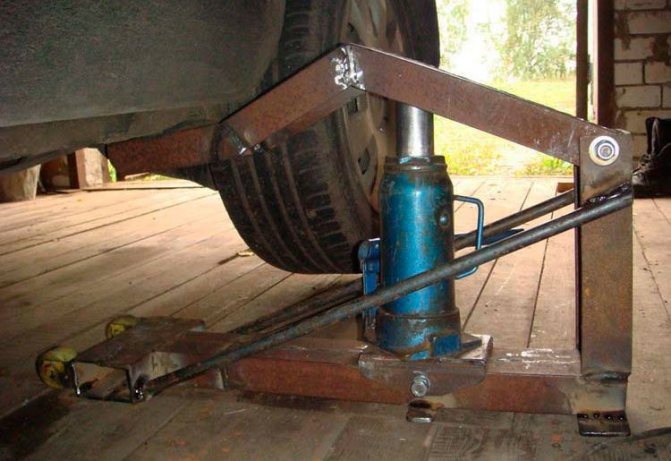
DIY car lift.
I had a hydraulic jack in my garage, it was tall, and you couldn’t put it under the car. And so I thought about how to adapt it. I found an idea on the Internet on how to build a pretty good jack.
True, the author made it from the 10th channel, but I didn’t have it on hand, but there was enough corner. I took the corners, welded them together, it looked like a channel. everything works perfectly.
A homemade lift lifts a 12-ton car with a bang.
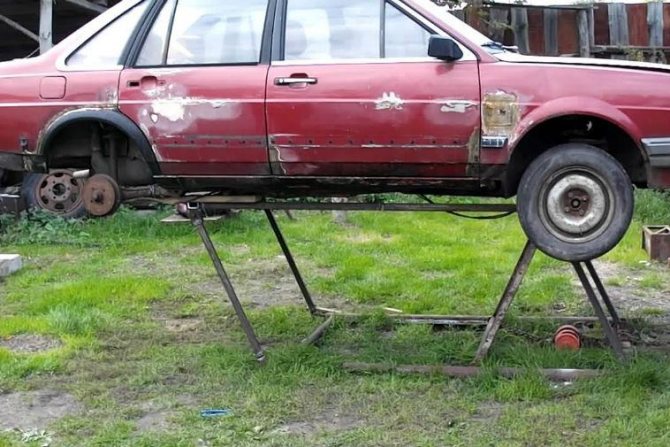
You can make a car lift with your own hands so that you can carry out maintenance and repair of your car yourself if there is no inspection hole. Not every pit can be equipped with a pit, so many car owners are thinking about making a lift themselves.
Despite the reliability and durability of the car, many of its elements are subject to severe wear and tear. It happens that the car does not start and you need to find out what the reason is. To lift the car yourself without external help, you cannot do without a lift. But the cost of car lifts is high, and not all drivers can afford to purchase one. Also, many drivers use the jack a couple of times a year. Therefore, to avoid unnecessary costs, it is better to make a car lift yourself.
Here we will tell you how to make a car lift yourself, and what you need for this.
Difficulties in making a lift
The cost of a finished car lift is high, but a self-made version can damage a person working under it if the design is unreliable. The weight of the car should not exceed more than a ton; if the structure falls on a person, irreversible injuries can occur.
A homemade car lift is made according to prepared drawings, or versions of finished products are used. In the latter case, one has to rely on the author's high computational skills. Incorrect calculation of the base or one of the fastened units can lead to irreversible consequences, at best, damage to the lifted unit.
For a homemade kit, made with your own hands, you will need parts and components, without which assembly is impossible. You can find this type of component in large stores that sell construction equipment. If there are not enough funds for new parts, you need to go to scrap metal collection points and enterprises that write off old parts.
If you find an error, please select a piece of text and press Ctrl+Enter.
Types of car lifts
There are three types of lifting units for vehicle repair:
- Screw lifts.
- Chain mechanisms.
- Hydraulic devices.
According to the method of lifting the machine, lifts are divided into:
- Fork devices.
- Platform mechanisms.
- Scissor lifts.
The most common type of car lift is fork screw devices. Their base is a shaft made of tool steel that can withstand a force of several tons. But making such a device at home is almost impossible due to the complexity of the design of the plugs. Therefore, for self-production, it is better to use screw platform devices.
They are made in the form of two channels, located parallel to each other, and located with the ribs down, attached to screw drive devices, ensuring the lifting of the entire structure. In such units, the requirements for shafts are not too strict, since lifting is provided by four shafts instead of two. Their significant disadvantage is the need to use a jack to perform suspension repairs, since the car’s wheels are not suspended, but are located on channels.
Often platform and fork-type lifts for transport are produced with a chain drive. In terms of their parameters, they are no worse than screw ones, but they are much more complicated to manufacture; joint synchronous operation of electric drives and braking devices is required. To make scissor-type lifting devices, a hydraulic drive is usually used, but some craftsmen are experimenting with a screw and chain drive.
Creating a lift
a car lift in the garage with your own hands as follows:
- Supports are created using steel corners, which are driven into a wall with high load-bearing capacities. A plate about one centimeter thick is placed on the corners, which is secured with bolts.
- The force will be transmitted via a worm gearbox. It can be found extremely often today, since a similar mechanism was previously used to create a wide variety of devices. Holes are made in the plate for the circuit, after which it is passed through and closed. A key is placed on the output shaft of the worm gearbox.
- The output shaft is fitted with a sprocket suitable for the chain being used.
- Two more holes are created in the plate to pass the chain, which will end with a steel hook.
This design is most suitable for lifting engines and other heavy units. It is less suitable for lifting a vehicle.
In conclusion, we note that it is almost impossible to create a classic lifting device, which is found at service stations, using scrap materials. To work with the chassis or underbody of a car, you can create a tipper.
Many car enthusiasts have faced the need to repair or inspect a vehicle on their own. This can be done using special inspection holes or lifts. Not every driver is able to make a hole in the garage, and it is not always possible to get to it with a broken down car. It is in this case that a car lift comes in handy, which you can make with your own hands or purchase in a store.
Homemade or factory made
The main problem faced by those who want to make their own lift for a vehicle is the high price of the parts. Therefore, it will be cheaper to purchase a used mechanism. Hydraulic cylinders with the required load capacity and sufficient length cost several thousand rubles. Custom made worms from special steel will cost about the same amount. As a result, the cost of building even a primitive scissor lift will cost 100 thousand rubles, while the price of new devices from China of various types is much less.
Safety and reliability
In addition to price, there are also factors that cast doubt on the independent production of a car lift - safety and reliability. Even a small car can weigh more than a ton. If the lift fails, the car will fall onto the person below. There are many such cases.
The lift may fail for the following reasons:
- The structural supports are poorly secured.
- The locking device broke because it was not designed correctly.
- The weight of the car turned out to be more than permissible, as a result the drive mechanism could not stand it.
To make a lift yourself, they usually take a ready-made design, hoping that its developer has correctly calculated the strength of the parts, or they make these calculations themselves. Such a project can only be completed by a qualified engineer, and an ordinary driver is not able to do it. Also, you need to calculate what load can be applied to the drive and brake mechanism.
If these calculations are not performed correctly, then such a lift becomes a lethal device. It is also important to correctly calculate the base of this structure. Here you need not only to pour the required layer of concrete, but also to make fastenings in the specified places.
Lifting equipment
Today, not a single car repair shop, car service center or vehicle service station can do without car lifts. A car lift is a special design, a type of equipment used to lift and hold a car at a height during maintenance and repair work. A car lift greatly facilitates the work of a mechanic and also saves space in a garage or car service center. Before buying a lift for a car service or personal use, you should pay attention to the main types of car lifts and their brief characteristics:
- single-post lift
(consists of a horizontal support, a vertical post and a horizontal frame for lifting a car; its main advantage is its relative compactness; there are stationary and mobile car lifts; but at the same time it has a small load capacity: up to 2.5 tons, suitable mainly for passenger cars cars and some SUVs);
- two-post lift for car service
(a stationary structure that allows you to lift vehicles up to 5 tons or more, in connection with this there are very strict requirements for the floor: type of concrete, pouring time, strength, and so on; the load capacity depends on the model of the lift; these are universal lifts, very popular in car repair shops, they lift the car to a height of up to 2 meters, are multifunctional, and therefore are in great demand);
- four-post car lift
(consists of 4 posts and two platforms; very well suited for repairing light trucks and minibuses; the advantages are: reliability and efficiency of lifting the car, ease of operation);
- scissor car lift
(this design can be used together with other equipment to perform various types of work, although their cost is much more expensive, they are characterized by excellent stability and reliability even on an imperfect floor; ensures maximum smoothness of the car concept);
- plunger lift
(the most modern type of car lift, very simple to use, all power mechanisms are located under the floor surface; this type of lift allows you to view and work on the car from all 4 sides; they have a very long service life and significantly save working space).
Variants of car lift models
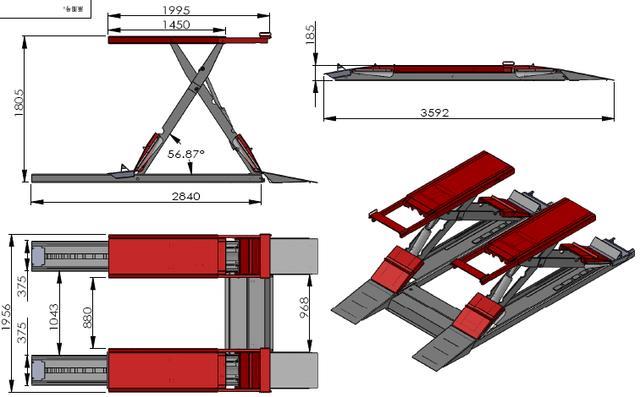
When deciding to manufacture a lift yourself, you need to select parts for it. You should start by looking for the drive mechanism and locking device. These parts can usually be found:
- At enterprises where there is old equipment.
- In stores selling various parts for equipment.
- At enterprises that update equipment.
- At scrap metal collection points.
To manufacture a car lift of this type, you will need two hydraulic cylinders of the required power and size, a compressor and high-pressure hydraulic hoses. The scissor-type car lift design is the simplest to manufacture, but it is difficult to make a reliable brake. Therefore, if the hose or hydraulic cylinder is damaged, a dangerous situation will arise.
Electric motors with gearboxes and shafts, which are necessary for fork lifts or platform lifts, can be quickly found where the old machine park is being replaced with a new one. It will cost significantly less compared to the price of turning worms. The stopper of this device also has a simple design - an oblique bar with a stopper is made of steel measuring 2 cm in thickness.
If you decide to make your own car lift, then before choosing a diagram it is better to see in practice what this device looks like, how it works, and whether it is safe. In this case, you risk not your car, but your own life. If there is another person under it when the car falls, then his life will also be at risk.
Option #1
The product will be fixed to the walls, so this device is used for repair work in garage conditions.
Required items:
- Three steel corners 7.5 x 7.5 cm.
- Worm type gearbox. Its minimum load capacity must be at least 300 kg, and its gear ratio must be at least 60 kg.
- Steel plate 10 mm thick. If you have an old machine used for metal work, then such a plate can be removed from it (the plate can be pulled out yourself).
- Bolts and nuts.
- Two metal chains, it is better that its links are at least 3 cm in diameter.
- Powerful hook.
- Steel cable with a diameter of 5 mm.
- 2 sprockets of different diameters.
Assembly order
- Fix the steel angles on the garage walls so that the car hood is lower in height.
- It is necessary to mount a steel plate on the corners of the lift and secure it with M8 bolts - 8 pieces. Since there will be no direct fastening of the plate and corners, the plate can be moved relative to the motor.
- Install the worm gear yourself.
- Attach larger sprockets to the gearbox drive shaft.
- Make a hole on the steel plate in the required place and insert the chain into it, then connect it into a ring.
- Install a smaller diameter sprocket on the gearbox output shaft.
- Make two holes in the plate for the second chain.
- Insert the second chain through these holes, throw one end of the chain onto the smaller sprocket, and fasten the hook to the other end.
- Assembly is complete.
DIY garage lift
For use in the garage, it is possible to make a kit for lifting a car with your own hands. You will need the necessary components, tools and plumbing skills.
A homemade lift is made using the following parts:
- Steel corners measuring 8x8x1 cm, for making a stable structure.
- Worm type gearbox. A new product can be expensive; it is usually selected during disassembly or removed from a non-working mechanism. It is necessary to pay attention to the load capacity, the indicator starts from 350 kg, the transmission force indicator is 60 kg.
- A steel plate with a minimum thickness of 1 cm is removed from old equipment.
- Set of bolts, mounting hook, star-shaped keys.
- Several iron chains with a link diameter of 2 cm or more. Weak chains will not withstand the load, you should pay attention to the quality of the product, some materials can stretch during operation.
- Steel cable, 5 mm thick.
Assembly and installation of components occurs in the required sequence, following the proposed instructions. The steel corners are fastened to the walls in the opposite direction from the hood of the car. On top of the corners for the lift, a steel plate is installed with your own hands. The connection is made with prepared bolts. Next, you need to install the worm gear, securing it with a key on the drive shaft. A key of smaller diameter is installed on the output shaft of the gearbox.

DIY chain lift
Holes suitable for the diameter of the chain are made in the plate, after which the chain mechanism is installed. It is important to pay attention to safety; holes are made in the frame at a certain distance, and a locking mechanism is inserted with them.
Features of operation of such a lift
The use of a worm-type unit during operation is suitable for lifting a car engine or load-bearing parts. The procedure for using a self-made car lift is simple; you must follow these steps:
- Remove engine mounts, bolts, nuts.
- Afterwards, the steel cable loops are supplied and the structure is coupled.
- The drive shaft rotates by turning the chain; with a little effort you can slowly lift the part to the desired position.
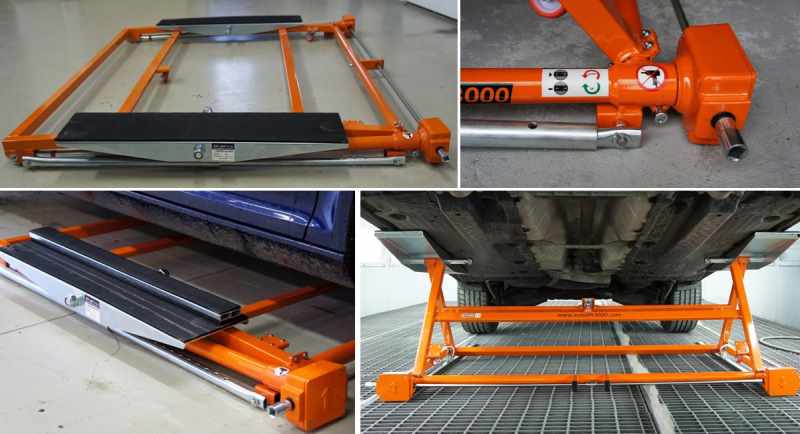
Worm type garage lift
After lifting, it is necessary to remove the car from the work area by placing a table under the engine. It is possible to make a stand or table with your own hands; the design must be durable and withstand heavy loads. Convenient to use is a table on wheels, which allows you to move the part in the required directions.
If the car is too big
Repairing large vehicles is not uncommon; wheel size and ground clearance may not allow you to raise the necessary parts to the required height. The process takes place with an assistant, who pulls the part onto a pre-prepared table. The gearbox rotates with the opposite side to the installed element.
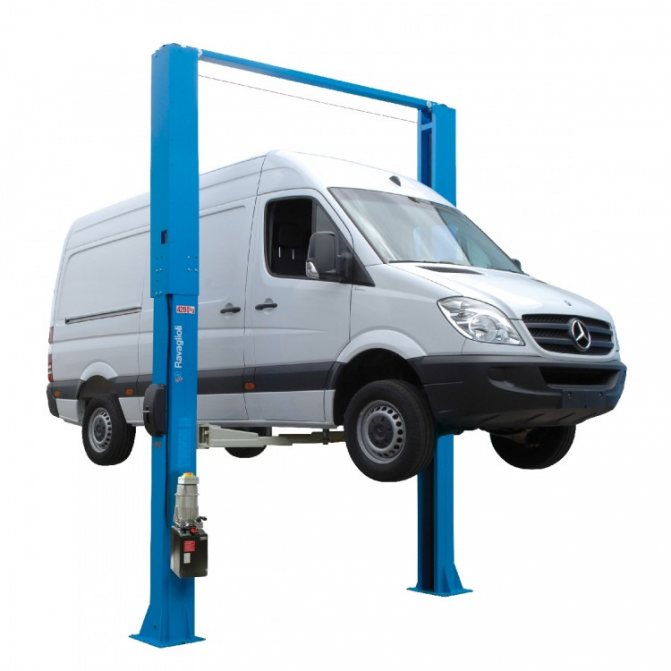
Car lift for large cars
Such situations lead to thoughts about improving and modernizing a car lift for a garage with your own hands. It is possible to manufacture a movable structure that will make it possible to move the lifted part to the required distances. It is possible to make an aggregate installation with an electric motor on a reduction gear, in which case it can be a real crane for lifting large-sized mechanisms.
